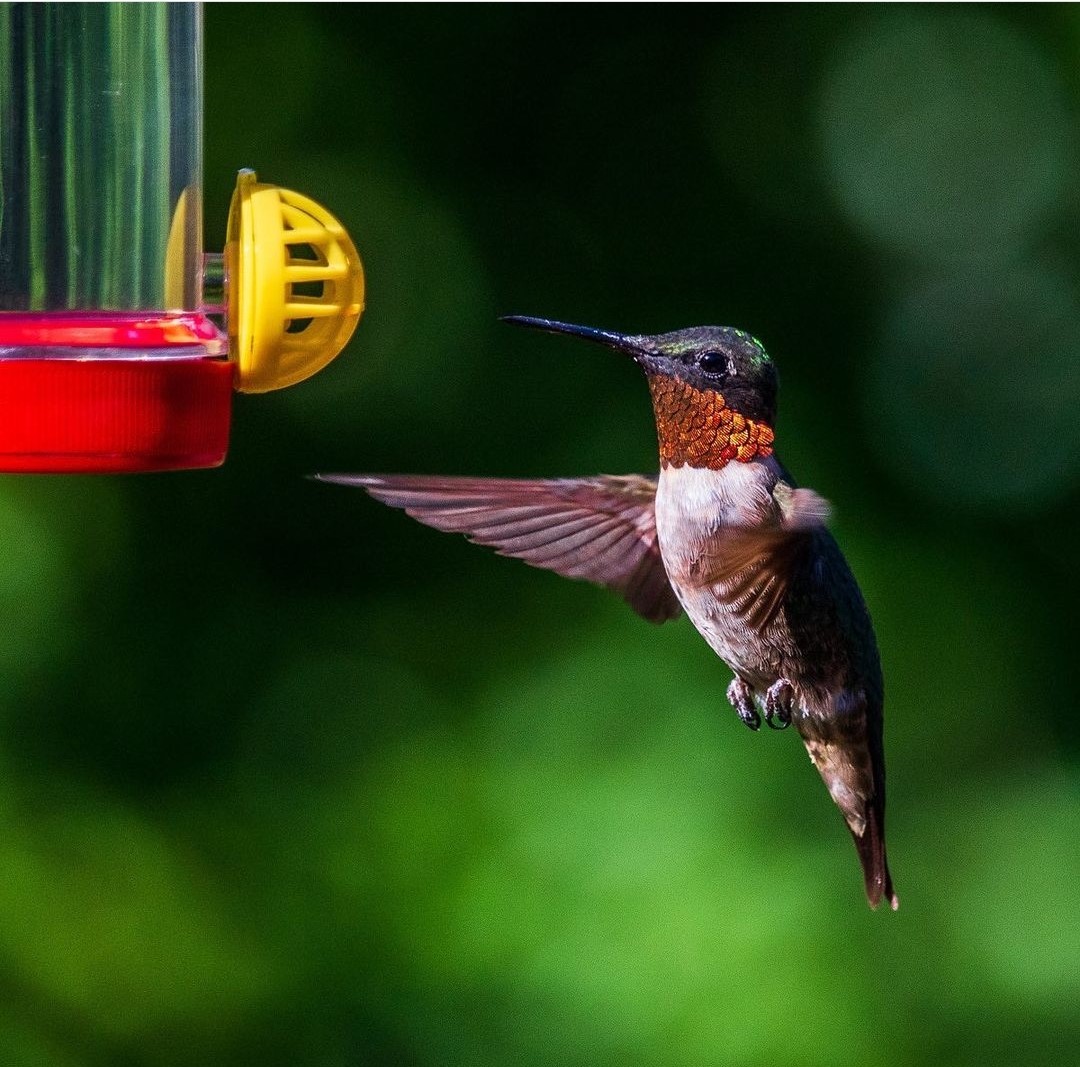This post contains affiliate links.
Minnesota is home to numerous hummingbirds both year-round and seasonal. There are even a few species of hummingbirds that are only rarely found in Minnesota as exotic visitors.
While it is easy to assume all hummingbirds are the same when we rarely see them as more than a jewel-toned flashing blur as they jet around our hanging flowers and porches; they have different temperaments, varied nesting habits, diverse coloring and reside in multiple geographical ranges.
What types of hummingbirds are found in Minnesota?
There are 7 hummingbird species found in Minnesota:
- Ruby-Throated
- Anna’s
- Calliope
- Costa’s
- Green-violetear (Mexican-violetear)
- Rivoli’s (Magnificent)
- Rufous
Native, seasonal, and rare hummingbirds seen in Minnesota
There are 7 species of hummingbirds seen in Minnesota.
- Year-round natives: Ruby-Throated.
- Seasonal: Ruby-Throated (some migrate).
- Rare: Anna’s, Calliope, Costa’s, Green-violetear (Mexican-violetear), Rivoli’s (Magnificent), and Rufous hummingbirds.
Hummingbirds are known to exist within certain established ranges, either as year-round natives or as part of a migratory cycle.
While there are species of hummingbirds as year-round natives of Minnesota as well as seasonal visitors, there are hummingbirds found rarely in Minnesota and show up at feeders far outside their established range. These hummingbirds are known in ornithological circles as “vagrants.”
Categories of Hummingbirds:
Year-Round/Native Hummingbirds:
These hummingbirds live in Minnesota year-round.
- Ruby-Throated (Year-Round Native)
Seasonal Hummingbirds:
These hummingbirds are in Minnesota temporarily as part of their migratory pattern.
- Ruby-Throated (Seasonal – Some Migrate)
Rare/Vagrant Hummingbirds:
These hummingbirds are outside of their normal geographic range when found in Minnesota but are occasionally spotted. Not only do these species of hummingbirds have a wide variety of specific geographic ranges, but they are also known to sometimes interbreed with each other, creating hybrids.
- Anna’s (Rare – Vagrant)
- Calliope (Rare – Vagrant)
- Costa’s (Rare – Vagrant)
- Green-violetear (Mexican-violetear) (Rare – Vagrant)
- Rivoli’s (Magnificent) (Rare – Vagrant)
- Rufous (Rare – Vagrant)
Because of human intervention, in the form of feeding stations and the transplant of exotic flowers in residential areas, some hummingbirds in mild climates are staying rather than migrating.
Read on to find out more about each of these hummingbird species as well as where and when they can be found in Minnesota.
Year-Round/Native Hummingbirds
RUBY-THROATED HUMMINGBIRD – (Archilochus colubris)
Conservation Status: Least concerned
Kingdom: Animalia
Phylum: Chordata
Class: Aves
Order: Apodiformes
Family: Trochilidae
Genus: Archilochus
Species: A. colubris
The Ruby-throated hummingbird’s scientific name originated from Carl Linnaeus, a Swedish botanist, who first listed this scientific classification as “Trochilus colubris”. It’s name changed over a hundred years later and was reclassified by Ludwig Reichenbach, a German botanist to “Archilochus colubris”, which is its current scientific name, meaning “top thief” or “sky spirit/sun-god bird”.
Ruby-throated hummingbirds are year-round natives to Minnesota. While most Ruby-throated hummingbirds are seen year-round, some Ruby-throated hummingbirds prefer to migrate south to winter in Mexico.
The Ruby-throated hummingbirds that choose to migrate will first arrive in Minnesota in late April for spring migration and leave by the end of September during fall migration.
Male Ruby-throated hummingbirds have a striking iridescent blood-red gorget, stopping at the neckline. He is identified with a dull metallic green topside, a light gray underbelly and black wings. The Ruby-throated hummingbird is a smaller species of hummingbirds weighing less than 4.5 grams or 2 U.S. dimes and is 2.8 to 3.3 inches in length. The oldest male Ruby-throated hummingbird has been recorded at 5 years.
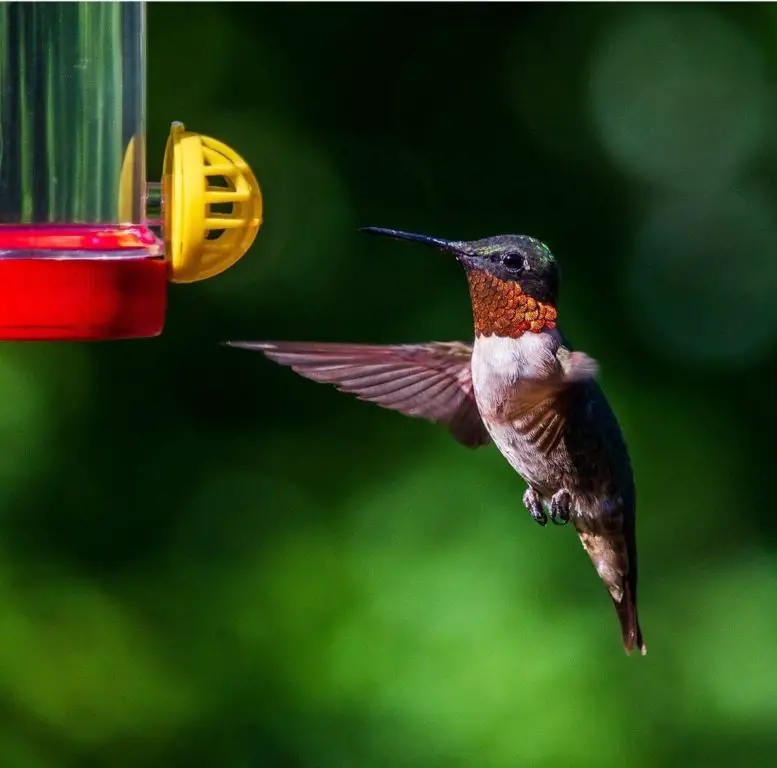
Photo by: MaryLou Ziebarth
Taken: Two Harbors, Minnesota
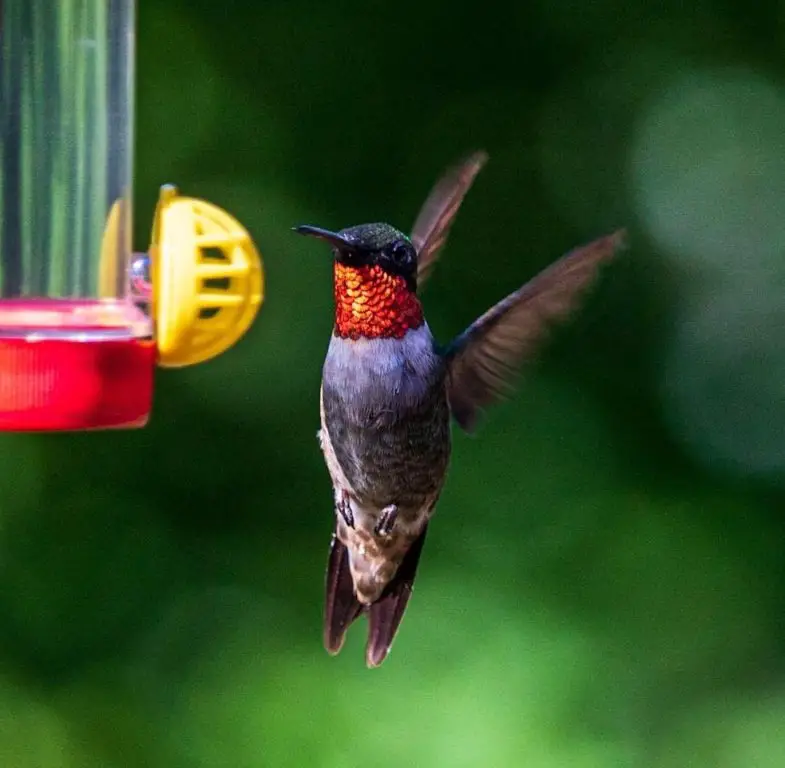
Photo by: MaryLou Ziebarth
Taken: Two Harbors, Minnesota
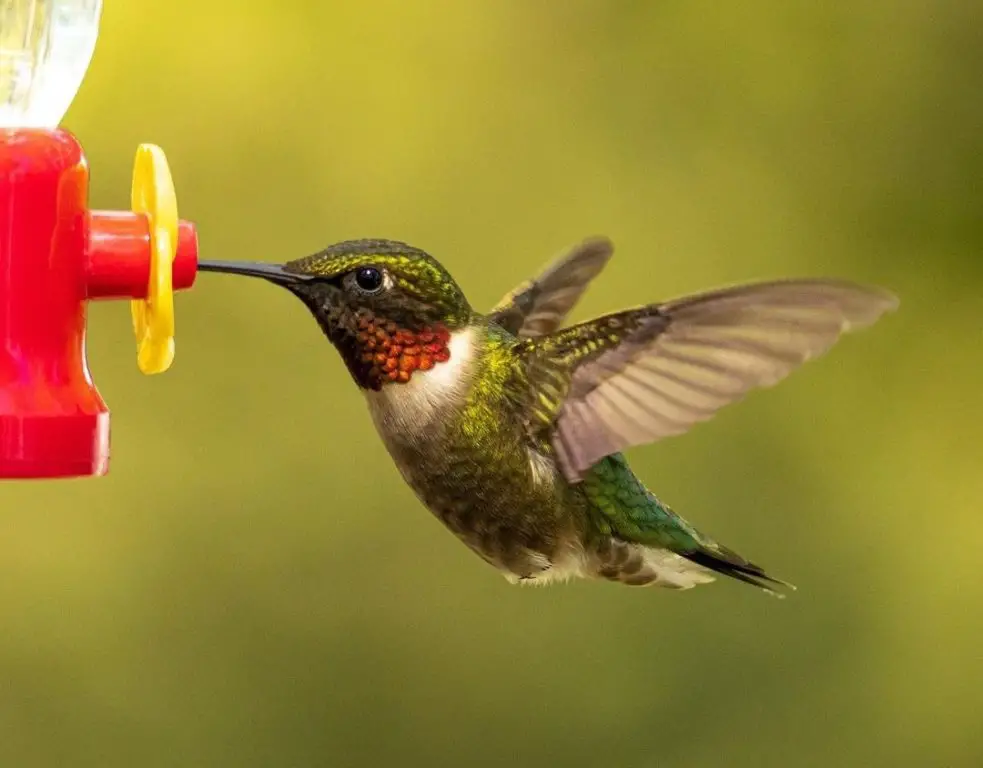
Photo by: MaryLou Ziebarth
Taken: Two Harbors, Minnesota
Female Ruby-throated hummingbirds have a white throat with some light stippling and are typically larger than the males. The oldest female Ruby-throated hummingbird has been recorded at 9 years, almost double that of the male.
However, the average lifespan of a Ruby-throated hummingbird is approximately 3-5 years.
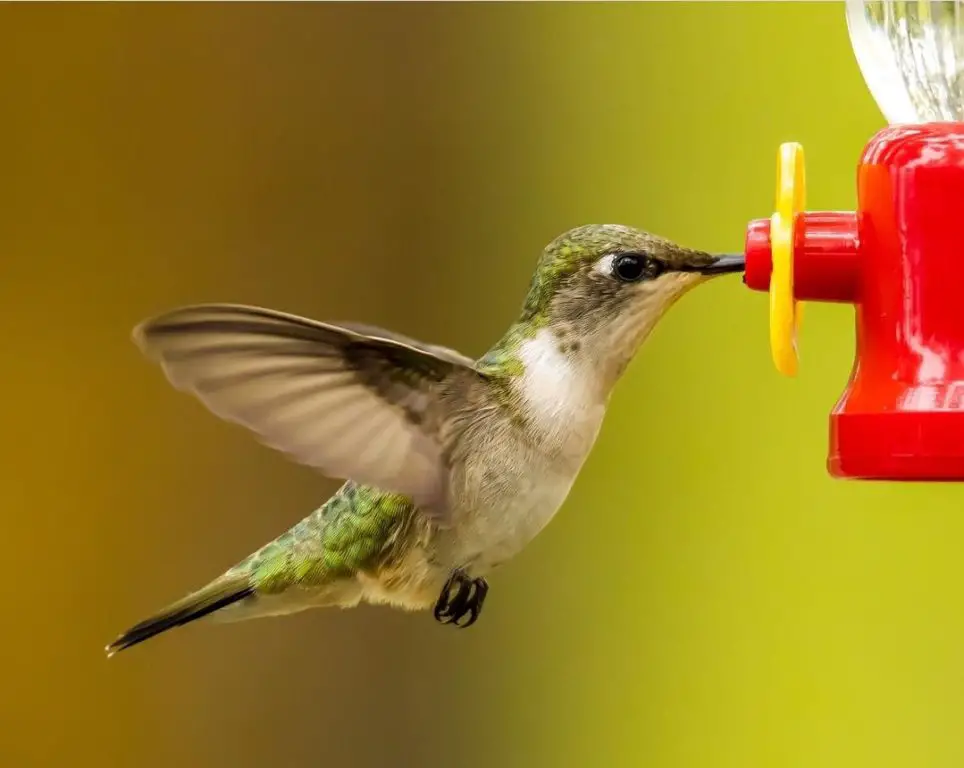
Photo by: MaryLou Ziebarth
Taken: Two Harbors, Minnesota
Juvenile male and female Ruby-throated hummingbirds during their initial stages of life resemble their mother exhibiting a white throat with light stippling.
As the males mature, they begin to display a few specks of color near their neckline and eventually their bolder red throat feathers become more dominant and stately displaying a colorful gorget.
Juvenile females show a light faint grey stippling on their throat. As both sexes mature their less vivid and lighter colored plumage will begin to mature and become darker in color.
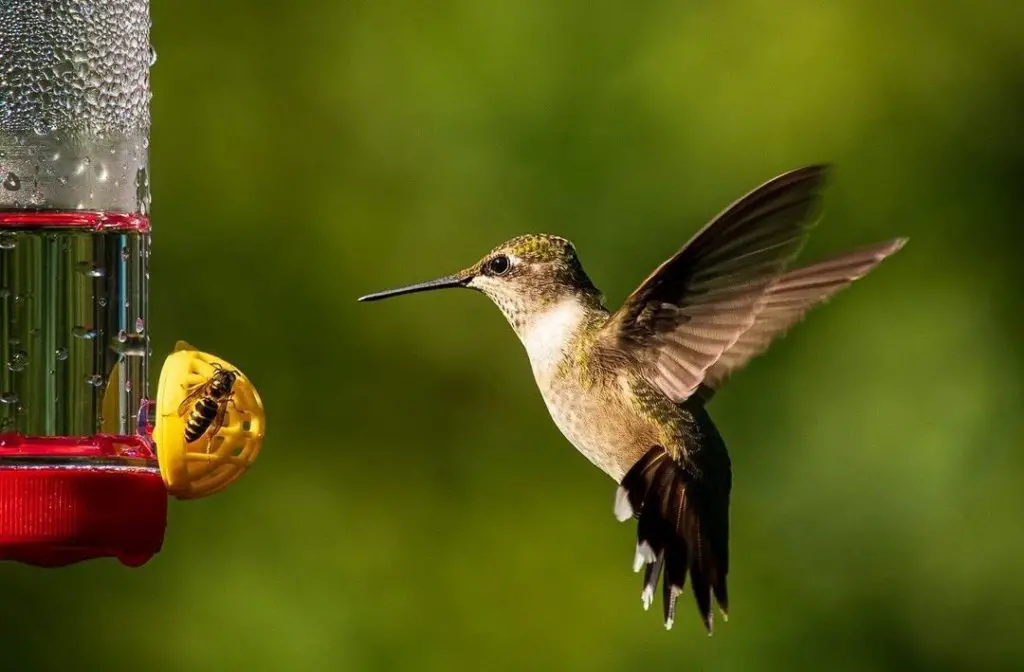
Photo by: MaryLou Ziebarth
Taken: Two Harbors, Minnesota
Note: It is difficult at a glance to tell the difference between a juvenile male and a female Ruby-throated hummingbird. This picture possibly looks like a juvenile male Ruby-throated hummingbird due to the fact that his throat shows MORE of the light faint stippling than the females with a less distinct white eye accent. In this picture he is also struggling with a bee or wasp situation at the feeder.
See my article: Bees On My Hummingbird Feeder: (9 Tips To Get Rid of Them)
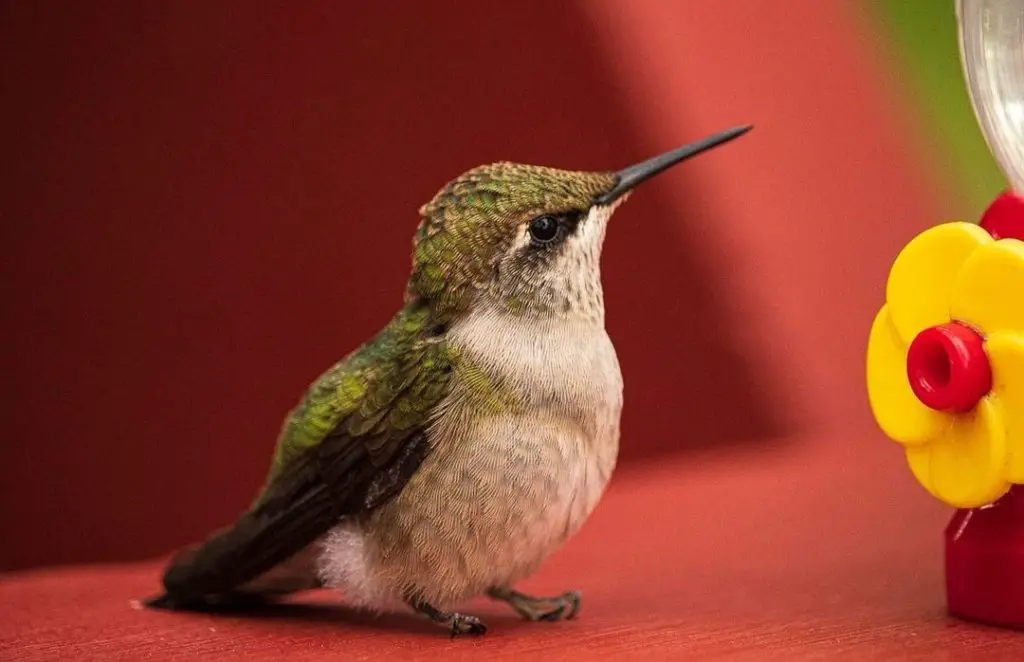
Photo by: MaryLou Ziebarth
Taken: Two Harbors, Minnesota
Ruby-throated hummingbirds are the only species that nest in Minnesota and the only ones that nest east of the Mississippi River. All other hummingbirds seen in Minnesota are just passing through to their nesting destination.
There are two migration routes for the Ruby-throated hummingbird during the spring and fall migrations.
The first migration route is a direct but exhausting nonstop journey southwest over the Gulf of Mexico to Mexico and then down to Central America for the winter. The flight distance over the Gulf of Mexico is over 500 miles. Although this is the direct “short” route, there are numerous obstacles faced by these birds.
Some obstacles include not being able to rest, no means to refuel or eat and having to avoid the dangerous tropical Atlantic hurricanes while flying to their destination. To make matters worse, depending on how you look at it, they migrate during the dark hours of the night or are taking the “Red-eye flight”.
Researchers believe their small size makes the energy expenditure of their grueling trans-oceanic migration pattern more taxing for males than for females even though they both double their body’s fat prior to making the migration across the Gulf of Mexico.
The second migration route is over 2,000 miles, flying along the coastline outlining the Gulf of Mexico. Although this is the “long” route, it allows the opportunity to rest and refuel even though there are fewer food source guarantees along the way.
Scientists are unclear and continue to investigate as to why one group of birds would prefer to take one route over the other.
See my article: Hummingbird Migration in Minnesota
Ruby-throated hummingbirds prefer open woodland and are often seen in parks, gardens, and backyards as well. They are solitary birds except during mating periods when they are fiercely territorial and aggressive towards hummingbirds of other species.
Even though these hummingbirds have an aggressive side they can still be eaten by predators such as large invertebrates, praying mantises, orb-weaver spiders, and dragonflies.
See pictures of male, female, and juvenile Ruby-throated hummingbirds here…..
Hear sounds of Ruby-throated hummingbirds here…..
Seasonal Hummingbirds
The only seasonal hummingbirds found in Minnesota are the same as the year-round residents identified above.
Rare/Vagrant Hummingbirds
ANNA’S HUMMINGBIRD – (Calypte anna)
Conservation Status: Least concerned
Kingdom: Animalia
Phylum: Chordata
Class: Aves
Order: Apodiformes
Family: Trochilidae
Genus: Calypte
Species: C. anna
Anna’s hummingbirds are named after Anna Massena, Duchess of Rivoli. These birds are rare/accidental vagrants to Minnesota since they are a common resident on the western coast. Only 3 recorded sightings in Minnesota have been documented during fall migration.
Male Anna’s hummingbirds are the only hummingbird species in North America with a red crown. They are identified as mostly green, gray, and magenta in color. The males have a flashy and colorful iridescent magenta gorget and crown. Their size ranges from3.5 inches to 4.3 inches in length and they weigh 2.4 to 4.5 grams.
The gorget on a male hummingbird is named after the protective metal piece in a suit of armor that covers the wearer’s throat to prevent injury when in battle. Since male hummingbirds are very aggressive with each other when fighting for their own territory, this name is appropriate and fitting to describe their physical attributes.
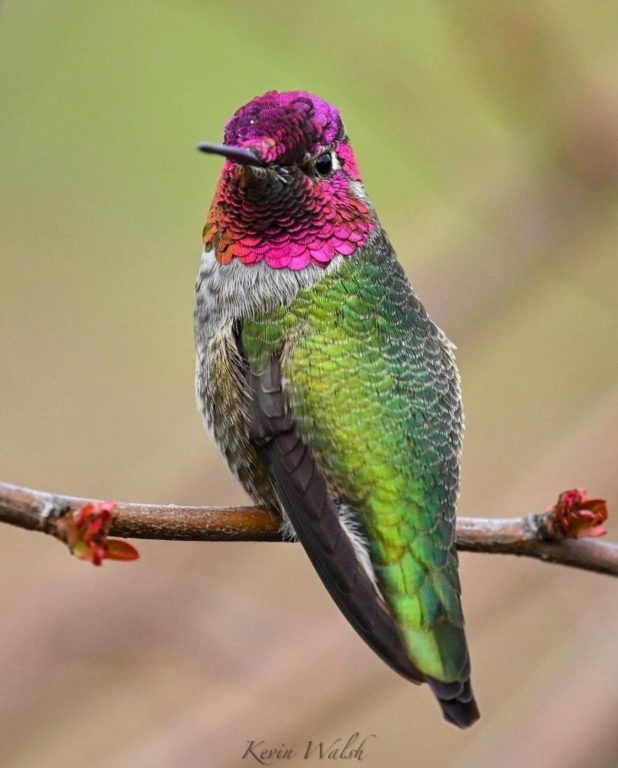
Photo by: Kevin Walsh
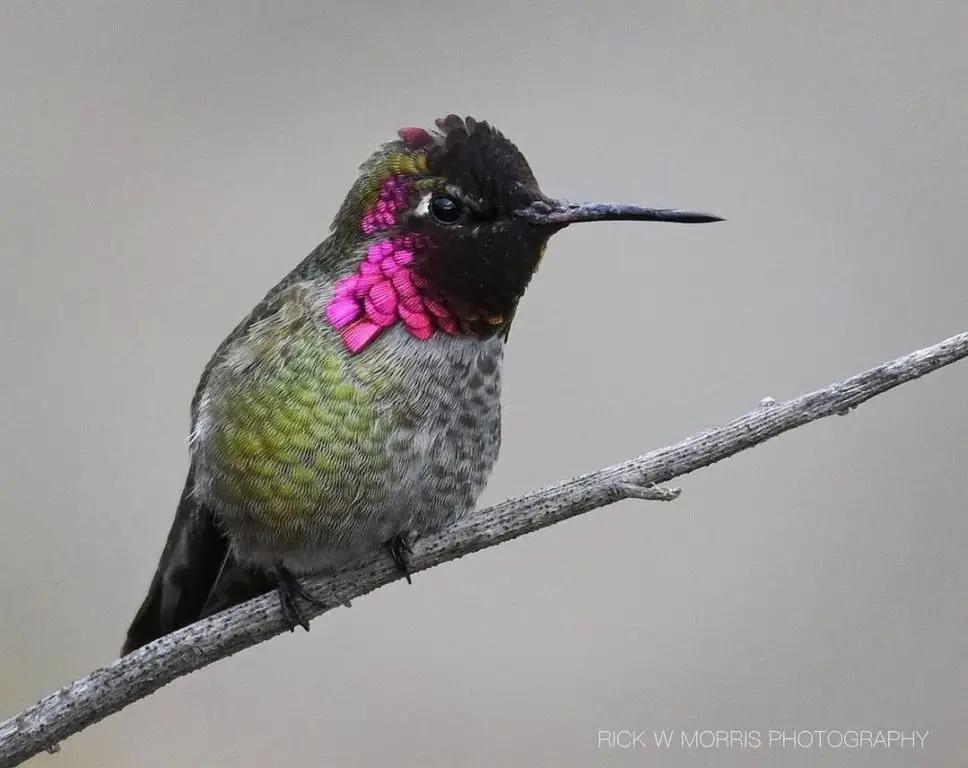
Photo by: rickwmo
Female Anna’s hummingbirds are overall not as colorful as the males, appearing pale green in color. Females can also have a gorget, but it is a smaller patch of magenta. Females tend to have a pale white line over each eye that makes them distinctive.
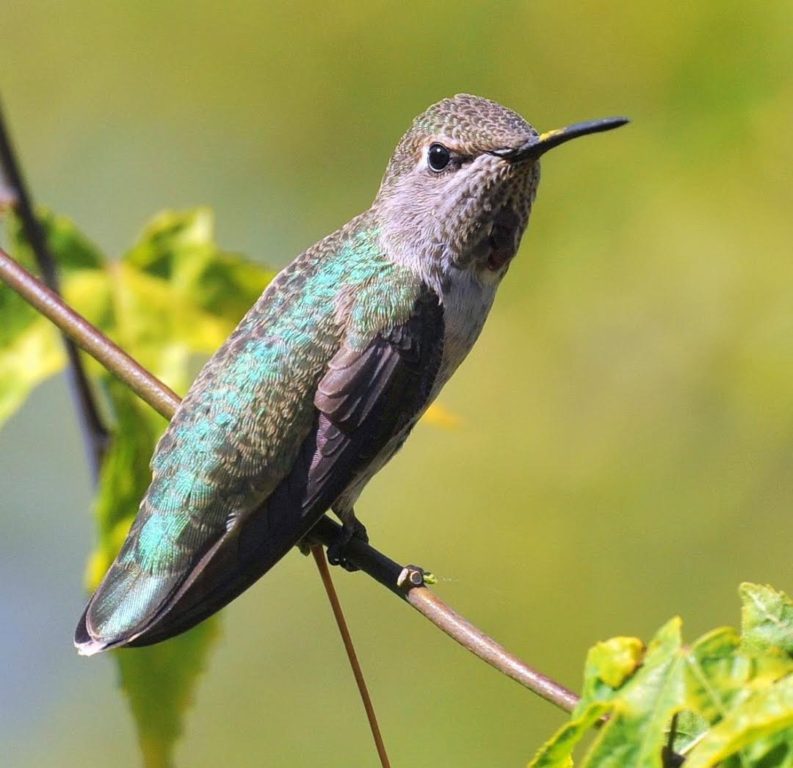
Photo by: rickwmo
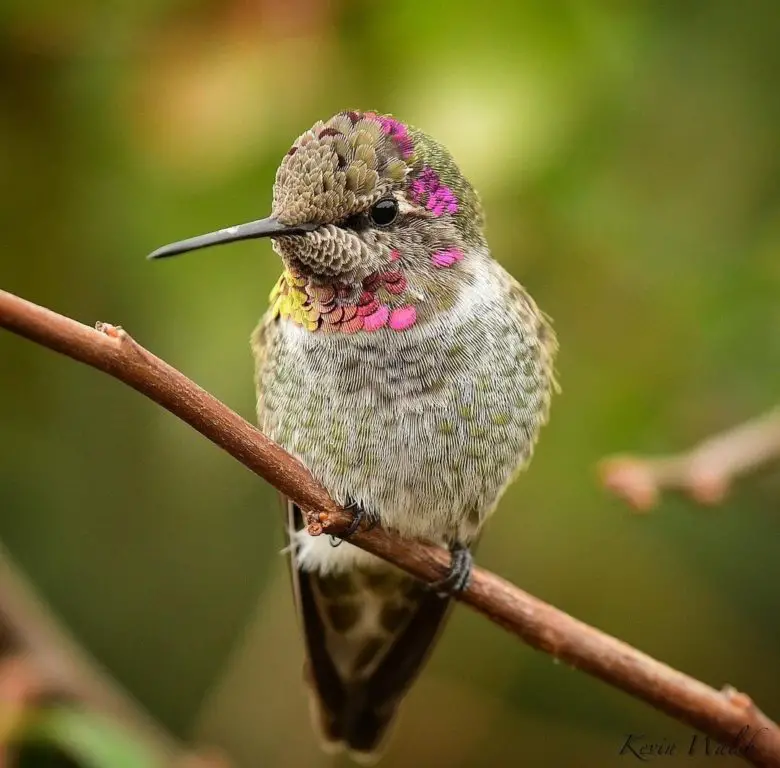
Photo by: Kevin Walsh
Note: This Anna’s hummingbird could be a juvenile in those awkward teenage years or it could be during a molting stage.
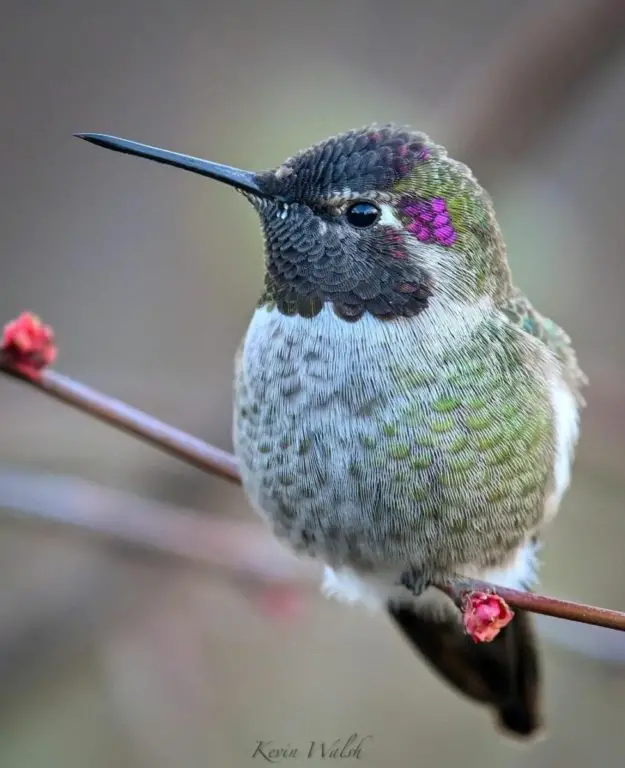
Photo by: Kevin Walsh
Note: This juvenile male Anna’s Hummingbird is beginning to show his magenta head feathers near his temple along with some faint color starting to show on his gorget.
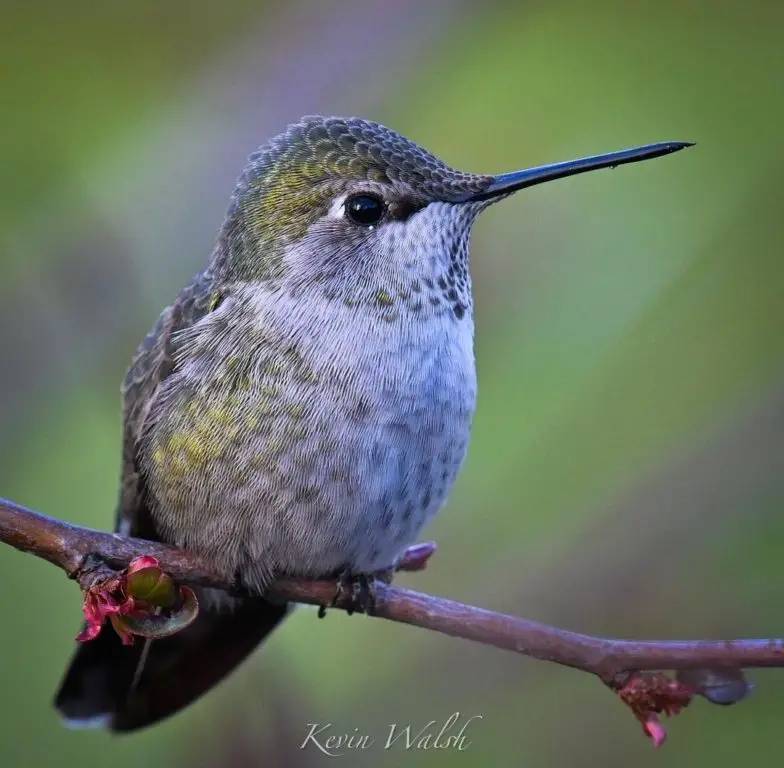
Photo by: Kevin Walsh
The Anna’s hummingbird predominantly breeds in northern Baja California and parts of Southern California, however, due to the transplanting of exotic ornamental plants in residential areas along the Pacific Coast and Inland Deserts, their breeding range has expanded up the Western Seaboard. Anna’s hummingbirds have the northernmost year-round range of any hummingbird species.
Female Anna’s hummingbirds raise their young with no help from the males.
Anna’s hummingbirds protect their territory with elaborate dives targeted towards predatory birds and even towards people they perceive to be threatening.
See pictures of male, female and juvenile Anna’s hummingbirds here…..
Hear sounds of Anna’s hummingbirds here…..
CALLIOPE HUMMINGBIRD – (Selasphorus calliope)
Conservation Status: Least concerned
Kingdom: Animalia
Phylum: Chordata
Class: Aves
Order: Apodiformes
Family: Trochilidae
Genus: Selasphorus
Species: S. calliope
Calliope hummingbirds are a rare/accidental visitor to Minnesota since there have been only one recorded sighting during fall migration.
They are named after a Greek mythological muse, who represented poetry and eloquence. Calliope means “beautiful voice” in ancient Greek.
Calliope hummingbirds are the smallest long-distance migratory bird in the world. All tend to breed in the higher elevations of the Rocky Mountains.
Male Calliope hummingbirds are easily identified by their iridescent purple crown and long striking spaced outline row of feathers that project down the sides of their throat. Like many hummingbirds, the backs are metallic green and these birds measure 3 inches in length and weigh 2-3 grams.
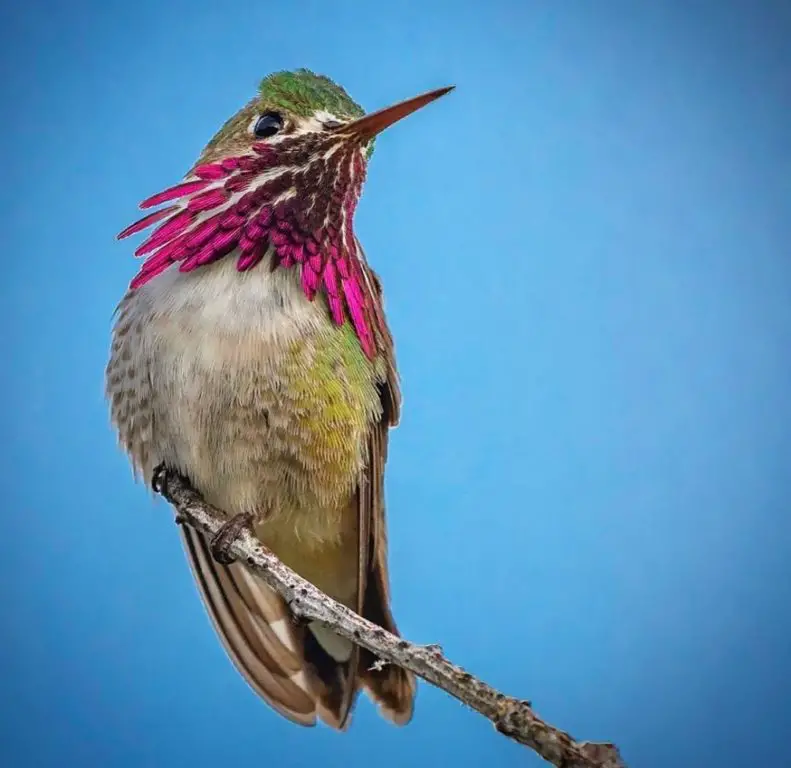
Photo by: sony_alpha_male
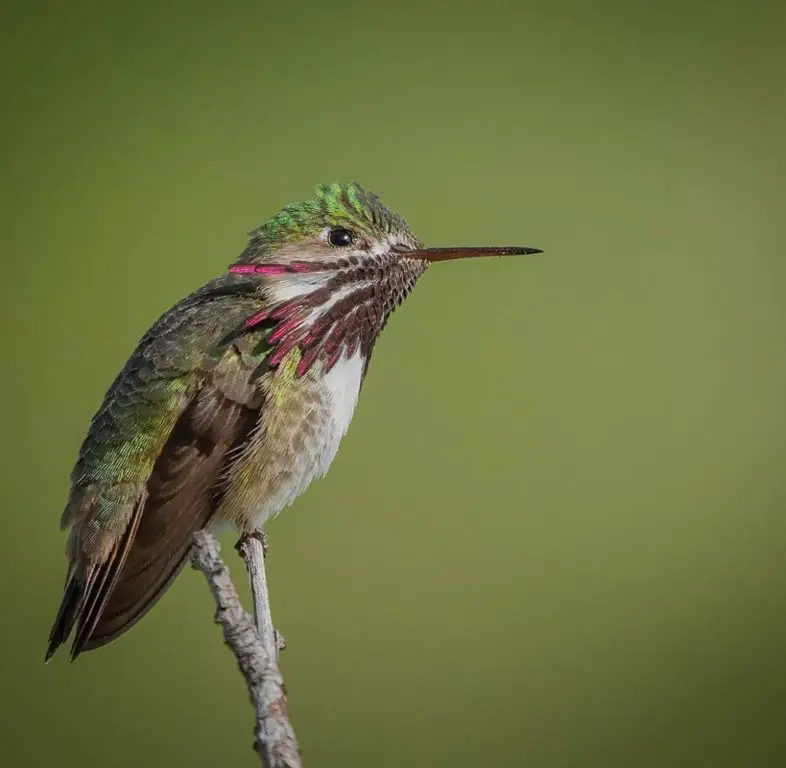
Photo by: sony_alpha_male
Female Calliopes have white underbellies and chins with some dark spotting at the throat. They have gray-green crowns and buff-colored flanks which are the underbelly or wing of a bird. Females sport dark tails with white tips.
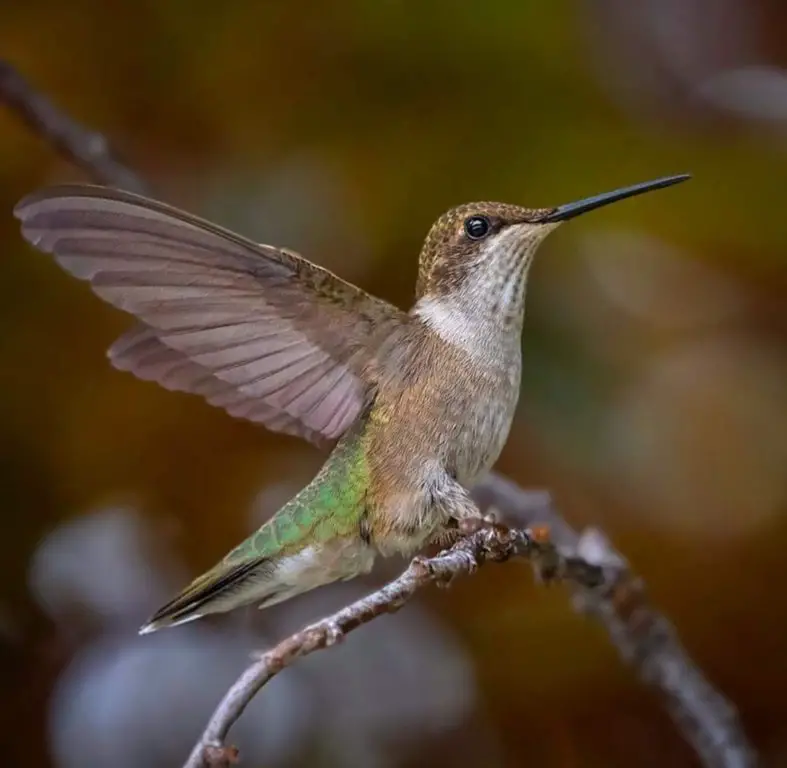
Photo by: sony_alpha_male
Like many hummingbirds, Calliopes communicate not just by their song, but also by manipulating their feathers during flight to make different buzzing noises that act as a form of language and communication.
Male Calliope hummingbirds establish a breeding territory and mate with every available female hummingbird that accepts his courtship.
When a female Calliope hummingbird builds a nest, they are known to both nest on the top of pine cones and to steal building materials from the nests of other birds in order to construct their own. They will also dismantle nests from previous seasons and recycle them in their new nest.
Therefore, they are often attacked and chased by larger, more aggressive species of hummingbirds, such as Allen’s and Rufous hummingbirds. This causes them to maintain a relatively low profile in comparison to other species.
Because Calliope hummingbirds have a more restricted wintering range than most hummingbirds, they are particularly vulnerable to habitat loss and natural disasters, such as climate change and wildfires.
During a capture and release banding operation in Idaho, the oldest living recorded female Calliope hummingbird was 8 years and 11 months old when she was captured twice, once in 2007 and again in 2014.
See my article: 3 Reasons Why Hummingbirds Are Banded
See pictures of male, female and juvenile Calliope hummingbirds here…..
Hear sounds of Calliope hummingbirds here…..
COSTA’S HUMMINGBIRD – (Calypte costae)
Conservation Status: Least concerned
Kingdom: Animalia
Phylum: Chordata
Class: Aves
Order: Apodiformes
Family: Trochilidae
Genus: Calypte
Species: C. costae
Costa’s hummingbirds are an extremely rare/accidental visitor to Minnesota because there has only been one recorded sighting during fall migration. They are considered a common year-round resident in the western parts of the United States.
Costa’s hummingbird was named in 1839 by Jules Bourcier to commemorate Louis Marie Pantaleon Costa, the French ornithologist who was an avid collector of hummingbirds.
Male Costa’s hummingbirds have a bright reddish-purple cap and gorget. Their gorget has long streaming throat feathers, similar to a Calliope hummingbird. Having green backs and flanks, their back and wings are black and their throat and tail have patches of white. Their size ranges from 3 inches to 3.5 inches in length and weighs 2-3 grams.
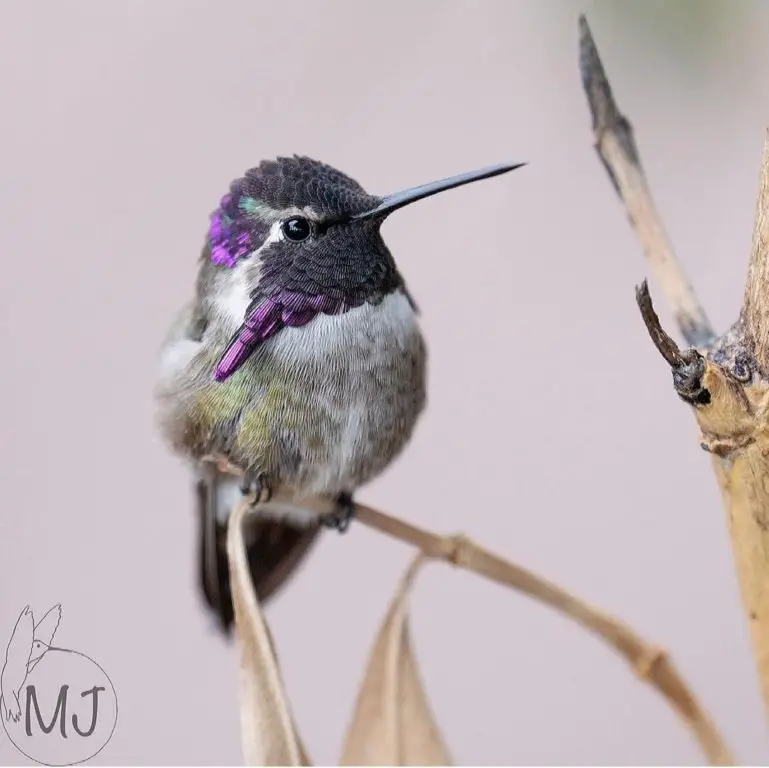
Photo by: hummingbirdsbysuprise
Female Costa’s hummingbirds are not as vibrant and display in color, a grayish-light green back with a dusty white underbelly.
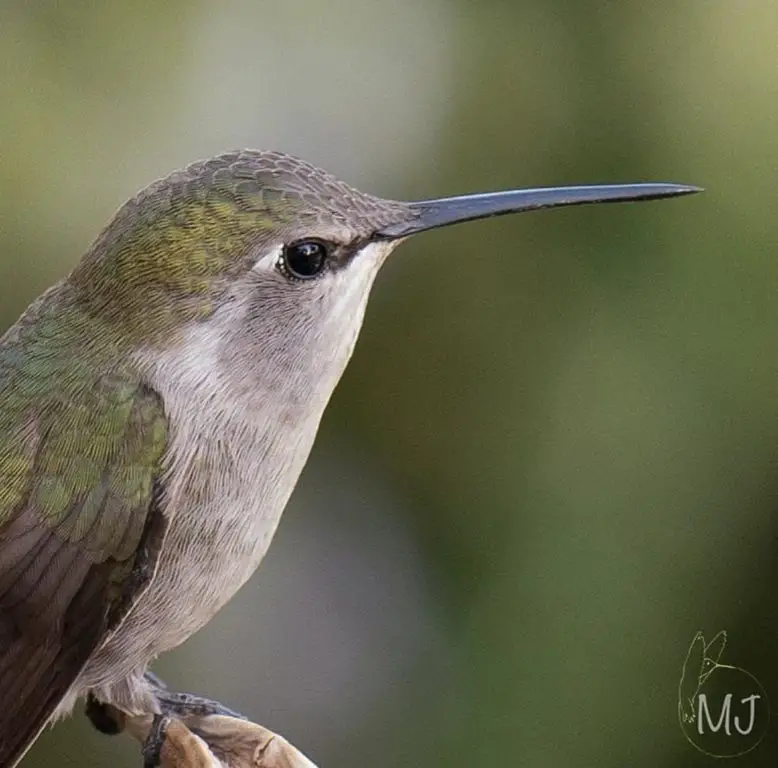
Photo by: hummingbirdsbysuprise
Female Costa’s hummingbirds migrate north to breed. They are a desert-dwelling species and build their nests in open areas with scarce vegetative cover. They have been known to nest on the tops of cacti. The thorns of the plant act as a deterrent to predators that may attempt to eat the eggs or nestlings.
Their habitat consists of desert scrub and washes including grasslands where they thrive on desert plants or ocotillos.
Male Costa’s hummingbirds are extremely territorial and can come across as being the meanest sheriff in town, especially when defending “their” feeders. Their aggressive conduct is equivalent to the known quarrelsome and combative behaviors of the Rufous hummingbird.
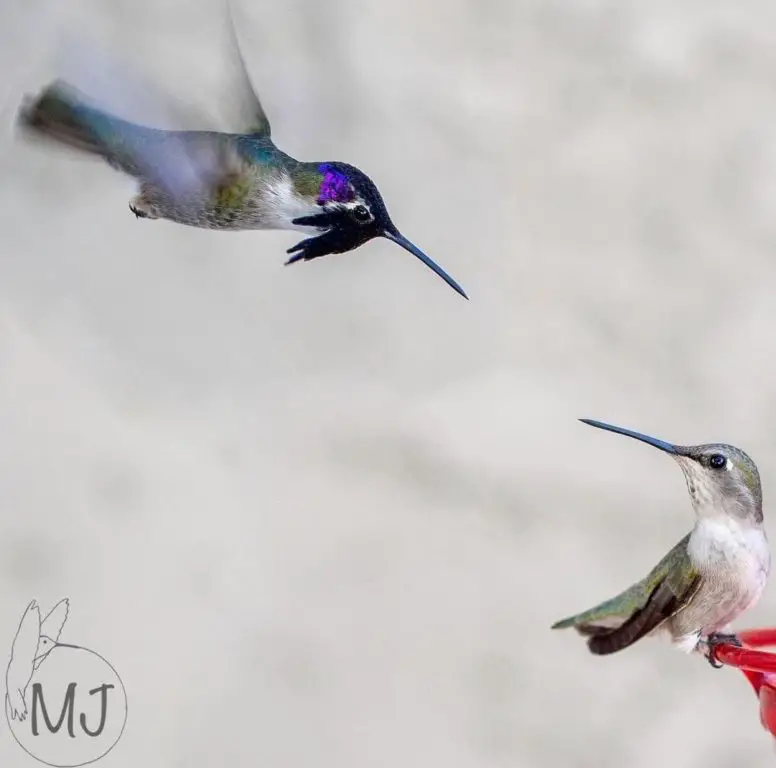
Photo by: hummingbirdsbysuprise
These hummingbirds have no known predators, however, the largest threat to Costa’s hummingbirds is human encroachment in the form of the desert being plowed and cleared for settlement and grazing.
They are known to interbreed and produce hybrids between Anna’s, Black-chinned and Blue-throated hummingbirds.
See pictures of male, female and juvenile Costa’s hummingbirds here…..
Hear sounds of Costa’s hummingbirds here…..
GREEN-VIOLETEARS HUMMINGBIRD – (Colibri thalassinus)
Conservation Status: Least concerned
Kingdom: Animalia
Phylum: Chordata
Class: Aves
Order: Apodiformes
Family: Trochilidae
Genus: Colibri
Species: C. thalassinus / Mexican violetear
Green-violetear hummingbirds are rare/accidental visitors to Minnesota. There have only been two recorded sightings.
The Green-violetears or Mexican-violetears (Violet-ear) hummingbird gets their name from the Latin word thalassinus meaning “color of the sea”.
Individual Mexican-violetears have been identified straying as far north as Wisconsin, Michigan, and even Canada.
Male Green-violetear hummingbirds are iridescent green in color with a show of bright violet ear patches on each side of their neck (hence the name “violet-ears”). The tail of this hummingbird is metallic blue-green with bronze central tail feathers that feature a black band underneath. Their size ranges from 3.8 inches to 4.7 inches in length and they weigh 5-6 grams.
These species of hummingbird are found on the edge of cloud forests from Mexico to Nicaragua, where they enjoy a high level of tropical humidity in their environment. This dark hummingbird is commonly seen in forest clearings and edges moving among mountain ranges.
Green-violetear hummingbirds are somewhat nomadic. Scientists do not know much about their migration patterns as they have not been well-studied. But of the data that has been collected, the Mexican Violetear is typically found in central Mexico, Central America, and northern South America.
Like many other kinds of hummingbirds, the Green-violetear hummingbird is a solitary nester. They forage for nectar and insects alone rather than in a flock, but groups of these hummingbirds can be seen around flowering trees, such as the coffee-shade Inga tree.
See pictures and hear sounds of Mexican violet-ear hummingbirds here…..
RIVOLI’S HUMMINGBIRD – (Eugenes fulgens)
Conservation Status: Least concerned
Kingdom: Animalia
Phylum: Chordata
Class: Aves
Order: Apodiformes
Family: Trochilidae
Genus: Eugenes
Species: E. Fulgens
The Rivoli’s (pronounced: rivo-lee) hummingbird has undergone several name changes. In 1983 it was changed to the “Magnificent Hummingbird”, then to “Refulgent Hummingbird” only to have the “Rivoli’s Hummingbird” name return in 2017 when the species was split into two variations (Rivoli’s and Talamanca). Rivoli’s Hummingbird is named in honor of Francois Victor Massena, the Duke of Rivoli, by the ornithologist Rene-Primevera Lesson.
They are a rare/accidental vagrant to Minnesota since there have been only 3 recorded sightings all in the month of June.
The Rivoli’s hummingbirds are normally found in the western parts of the United States in the mountainous areas of Arizona, New Mexico, and Central America.
Male Rivoli’s hummingbirds are somewhat dark in color except when they are shown in bright daylight, where their violet crown, bright blue-green gorget, and white eyespots are more apparent through iridescence. They are 4.3 to 5.5 inches in length and weigh 6-10 grams. They are the largest hummingbird seen in Minnesota and the second largest hummingbird in the United States.
Female Rivoli’s hummingbirds prefer to live in ravines while feeding in open meadows. Their breeding habitat consists of building nests in evergreen coniferous trees such as pine, fir and juniper. These birds will nest in trees overhanging streams and creeks.
They have the highest recorded heart rate of any living vertebrate ranging from 420 to 1,200 beats per minute.
Rivoli’s hummingbirds are known for hybridizing with Broad-billed hummingbirds in the southernmost areas of its habitat range.
See pictures of male, female, and juvenile Rivoli’s hummingbirds here…..
Hear sounds of Rivoli’s hummingbirds here…..
RUFOUS HUMMINGBIRD – (Selasphorus rufus)
Conservation Status: Near threatened
Kingdom: Animalia
Phylum: Chordata
Class: Aves
Order: Apodiformes
Family: Trochilidae
Genus: Selasphorus
Species: S. rufous
The Rufous hummingbirds are rare vagrants to Minnesota. Only 13 recorded sightings have been documented. If seen, they arrive the first week of May during spring migration.
The Rufous hummingbird gets its name from the Latin-based word “Red” which is used to describe its reddish-brown coloring.
Male Rufous hummingbirds display an iridescent orange-red gorget, however, in darker lighting it can appear chocolate brown. Their flanks and tail are rusty in color. They have a white to beige underbelly and a black bill. Males can also have green plumage with specks of green color on their rustic-looking backs or on the crown of their head along with chocolate brown dorsal feathers. Their size is 2.8 inches to 3.5 inches in length and weighs 3.2 grams.
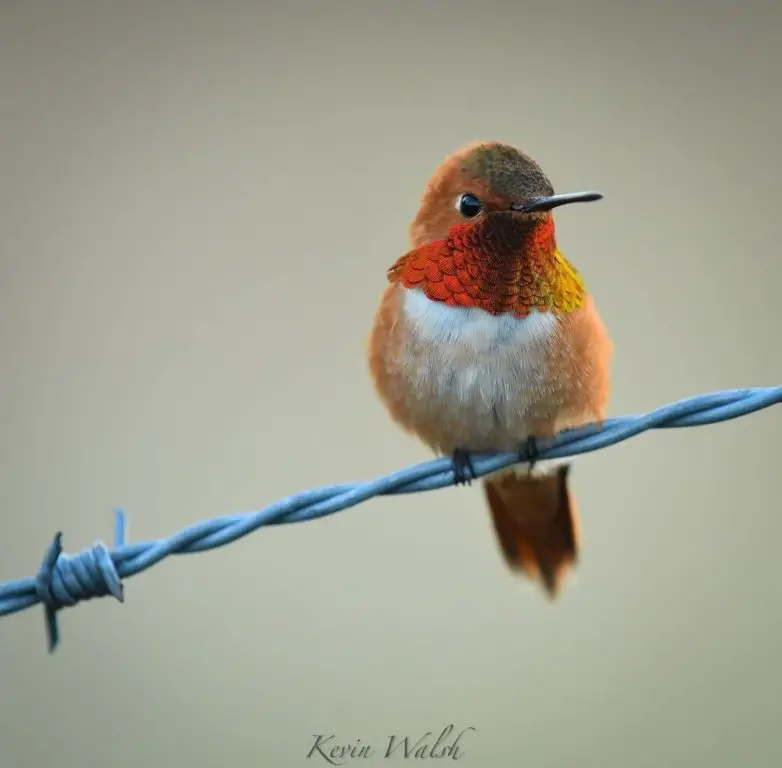
Photo by: Kevin Walsh
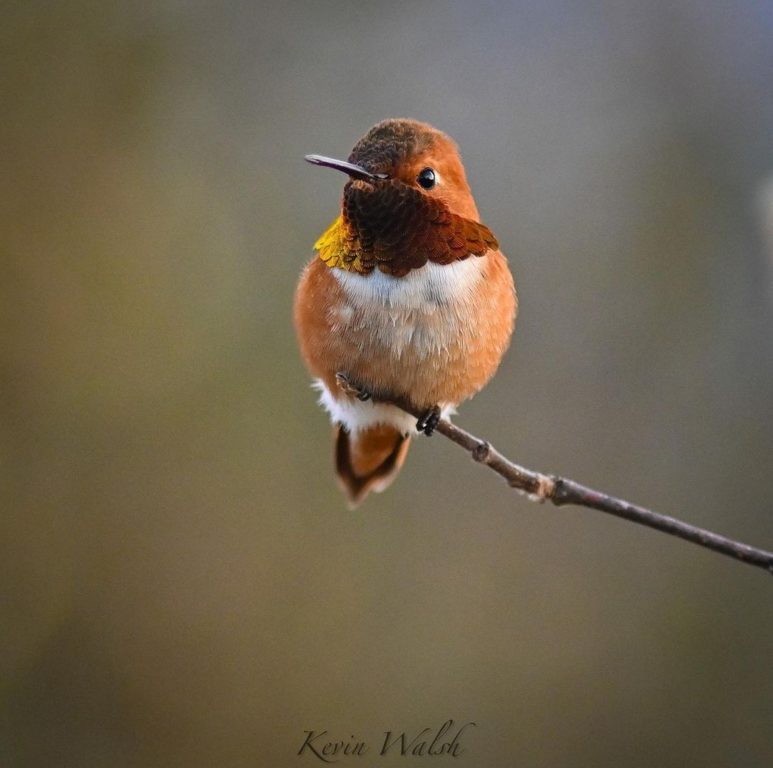
Photo by: Kevin Walsh
Juvenile male Rufous hummingbirds have a rustic look with small iridescent orange specks of color on their throats.
Juvenile Rufous hummingbirds are so similar in coloring and temperament to an Allen’s hummingbird that they are practically indistinguishable in the field. Therefore, identification is established by range rather than appearance.
Female Rufous hummingbirds are green and white with some iridescent orange feathers on their throat. Their tail is dark with white tips and an orange-red base. Female Rufous hummingbirds are slightly larger than the males in anticipation of producing offspring.
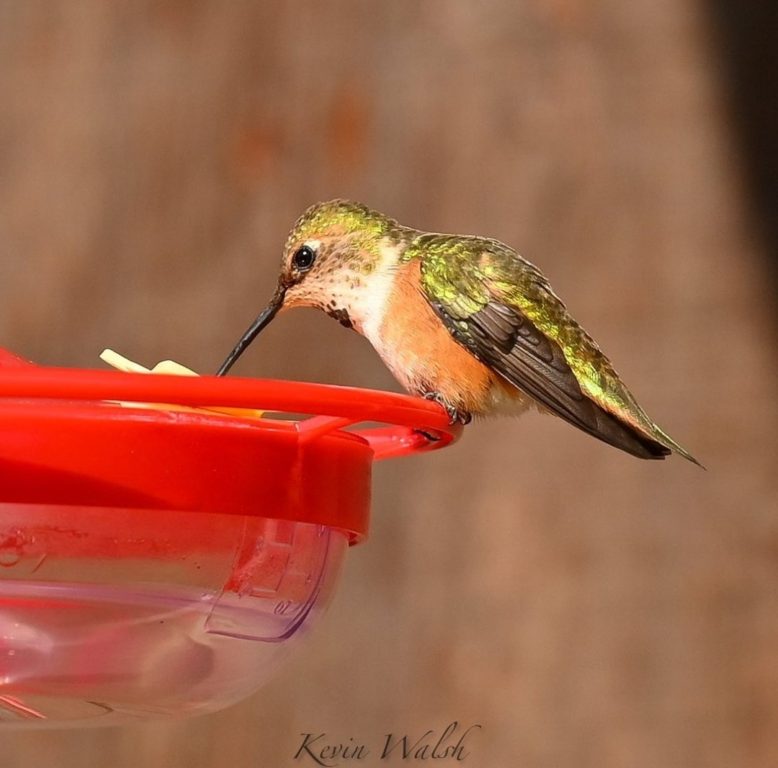
Photo by: Kevin Walsh
Like Allen’s hummingbirds, Rufous hummingbirds are highly territorial and can be aggressive to other hummingbirds and animals. They are fearless and have a reputation to even go as far as to attack squirrels and chipmunks that come too close to their nest. They can outmaneuver all other hummingbirds in the air, making them extremely competitive at feeders.
Rufous hummingbirds make the longest migrations of any other bird in the world, making a clockwise circuit of western America every year that is approximately 3,900 miles.
They have one of the northernmost breeding ranges of any hummingbird in the world, nesting as far north as Alaska. Rufous hummingbirds are polygamous and will mate with several partners in a season.
Rufous hummingbirds have excellent memories and have been known to investigate the location of an old hummingbird feeder years after the feeder has been removed.
During a capture and release banding operation in British Columbia, the oldest living recorded female Rufous hummingbird was 8 years and 11 months old.
See my article: 3 Reasons Why Hummingbirds Are Banded
Due to habitat loss in the Pacific Northwest, Rufous hummingbirds are listed at “near threatened” status by the IUCN red list of threatened species.
See pictures of male, female and juvenile Rufous hummingbirds here…..
Hear sounds of Rufous hummingbirds here…..
Keep your eyes peeled, observe and enjoy the multiple types of hummingbirds found in Minnesota!
See my article: Hummingbird Migration in Minnesota
Happy Hummingbird Watching!

Backyard Visitors participates in affiliate programs which compensate us for referring traffic.

